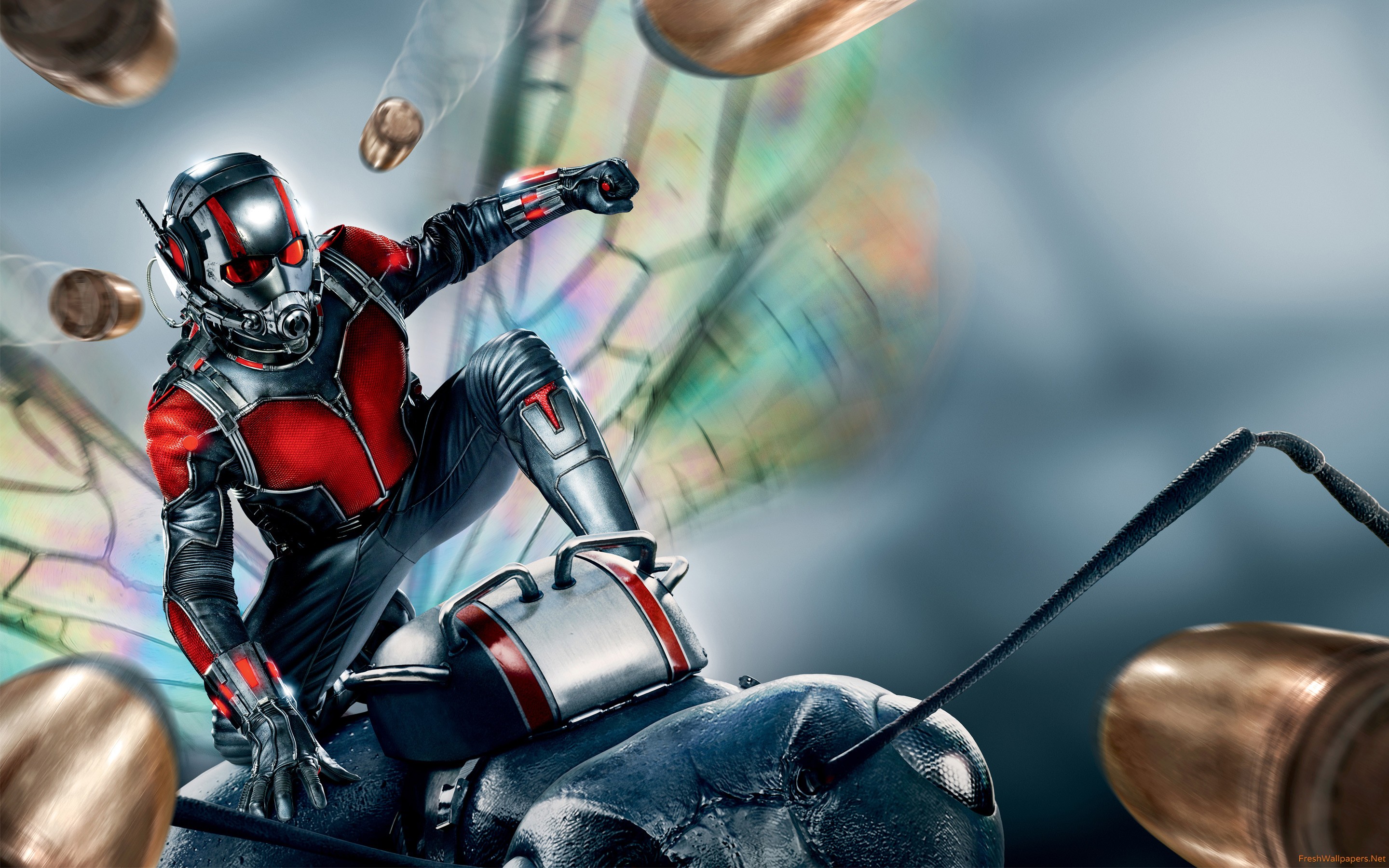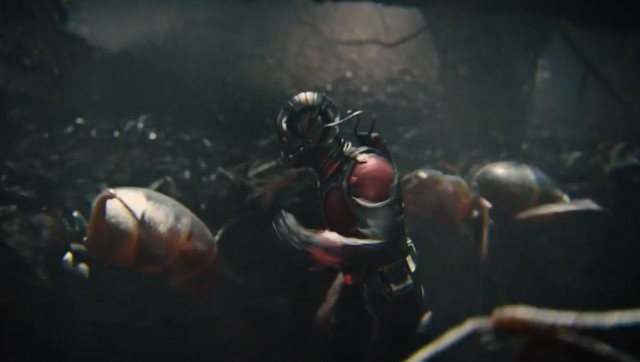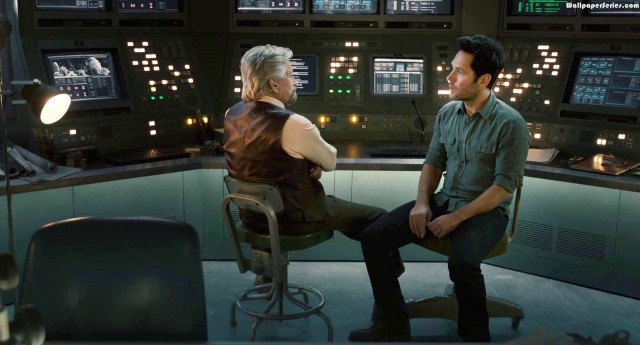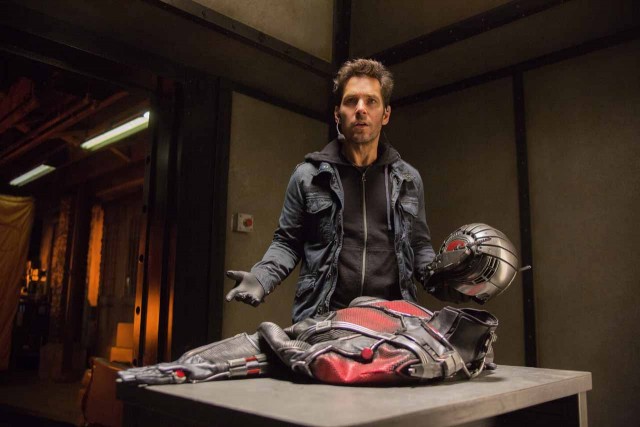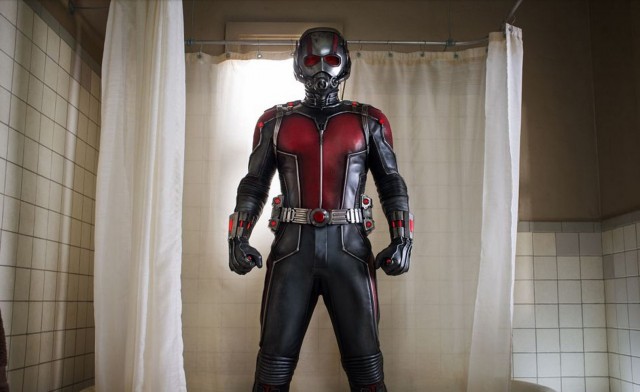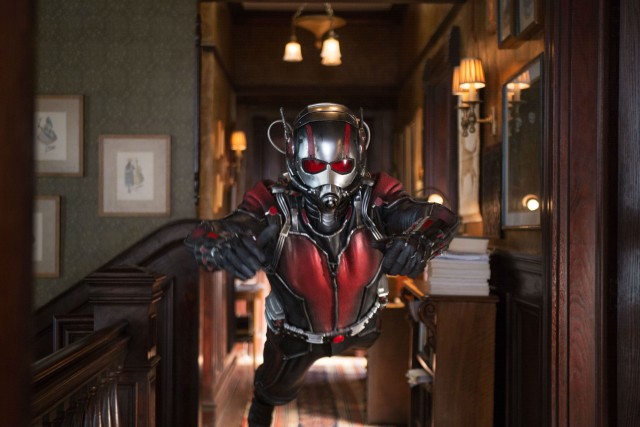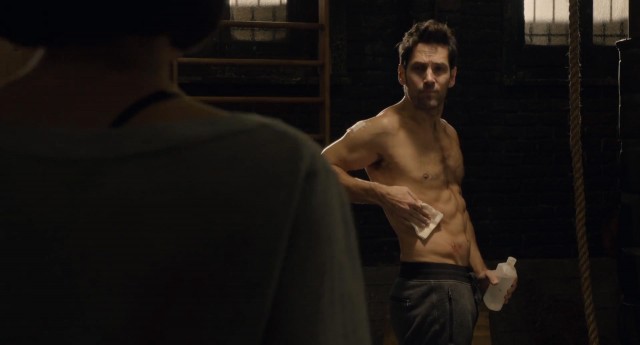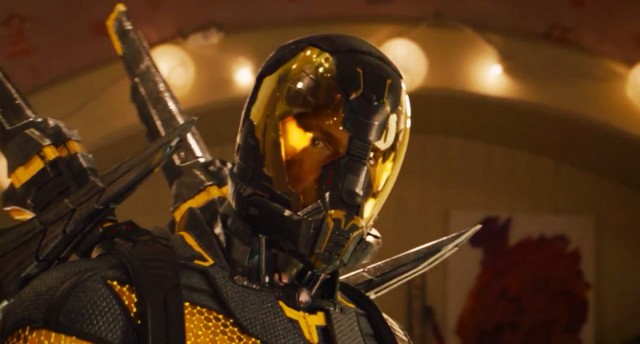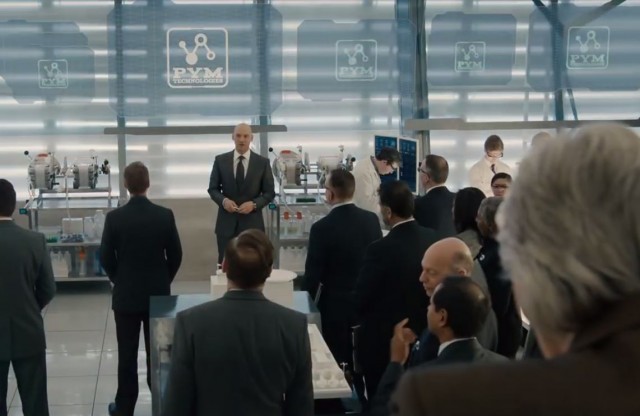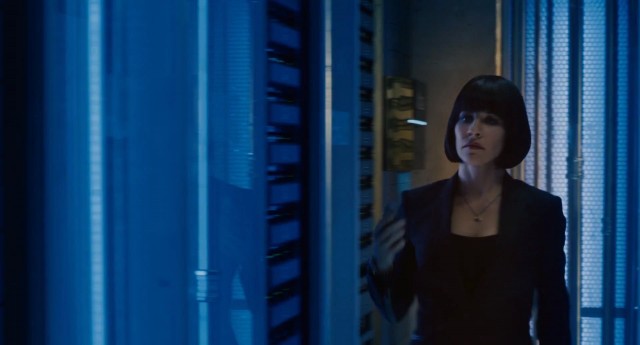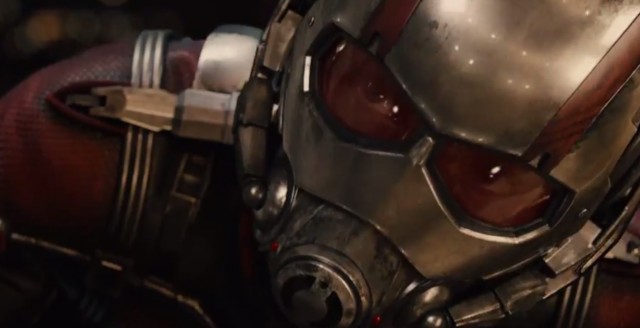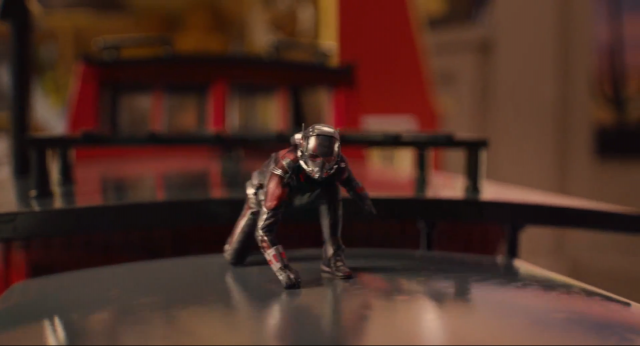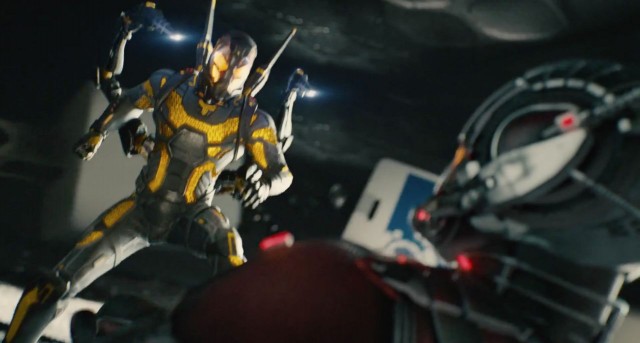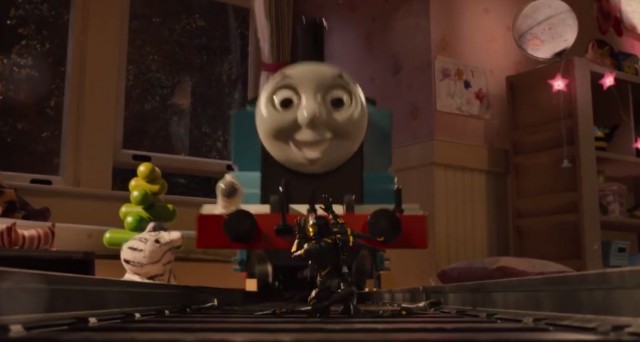Ant-Man had perhaps the most uphill climb of any Marvel Studios movie to date, even more so than left-field experiments like last year’s dark horse mega-hit, Guardians of the Galaxy. After spending almost a decade in development hell, the original champion and director of the movie, Edgar Wright, ended up walking away after all of the blood, sweat and tears he’d poured into realizing the big screen vision behind, frankly, one of Marvel’s most ridiculous and goofy superheroes, being a size-changing do-gooder that carries the strength of a normal-sized human when small, and also has telepathic influence over actual ants. That mess was before the necessary induction of Ant-Man into the shared Marvel Cinematic Universe as well, where the movie would have to operate in and share a world with established figures like Iron Man, Captain America, S.H.I.E.L.D., The Avengers, and, of course, the Guardians of the Galaxy.
For all of the MCU’s recent teases of big things to come with Infinity Stones and grand galactic-scale conflicts however, Ant-Man is a movie that operates on an appropriately smaller scale. Much of the spirit of Edgar Wright’s original story treatment for the movie remains intact, despite the change in director to Peyton Reed, and the script re-write by Anchorman: The Legend of Ron Burgundy mastermind, Adam McKay, with Ant-Man unfolding as a tongue-in-cheek heist movie and succession story, one that is self-contained for the most part, and entirely revolves around the unique plight of its title character, not any larger MCU conflict to come. Compared to the grand, sweeping spectacle of this past May’s crossover movie sequel, Avengers: Age of Ultron, Ant-Man almost feels like an innocent side trip to simply unwind and have some fun, as the MCU begins to enter darker territory.
Even considering that it was a bit of a Herculean endeavour to successfully get Ant-Man to the big screen at long last however, Ant-Man seems undisturbed by its laborious adaptation process, having the same cheeky charm and high-quality sense of humour that all Marvel Studios movies have pulled off so well to date. It’s certainly not the best Marvel Studios movie yet, but it’s far from a disaster, and is honestly quite good, goofiness of its title character be damned.
Even considering its outlandish premise and title hero, Ant-Man is a more conservative Marvel Studios piece, and is more of a simple crowd-pleaser than a true, earth-shattering blockbuster. Still, if you’re interested, or have any love for the many Marvel movies and TV shows that have dotted the shared MCU already, Ant-Man is a lot of fun, and manages to make its title hero surprisingly likable and cool, even in a shared universe that is already populated by many personalities that are even cooler.
Ant-Man separates itself from prior Marvel Studios movies by incorporating two separate generations of its title character. The most well-known and long-running Ant-Man from Marvel lore, Hank Pym, played by Michael Douglas, is now aged and weary by the time of the movie’s events, having grown distrustful and resentful of other superheroes, and especially of government organizations like S.H.I.E.L.D. After his back is against the wall however, Pym is forced to train a successor to the Ant-Man mantle to stop a menace of his own making, and that comes in the form of down-on-his-luck thief, Scott Lang, played by Paul Rudd.
Douglas and Rudd appropriately share the protagonist role, though it’s Rudd that’s most often in the drivers’ seat, as he is the Ant-Man that the movie’s title is mostly referring to. Rudd’s Lang is an accidental and often apprehensive hero, with Ant-Man offering him a redemption arc that wouldn’t be unfair to compare to that of Tony Stark in the original Iron Man movie. Unlike Iron Man however, Ant-Man is a humble hero that is more down-to-earth, and doesn’t have confidence in his own abilities, which feels fitting, given the nature of his superhero mantle. The movie is very much about Lang finding greatness in himself not because he’s misguided like Iron Man was, but because he has a lot of goodness in him that he just doesn’t know how to apply. His humility separates him nicely from other big MCU heroes like Iron Man, Captain America, The Hulk, Thor, Daredevil, and, hell, even Star-Lord, as these are all characters that either don’t concern themselves with how they apply their skills, or spend a lot of time worrying about how their excess of skills can hurt people.
Douglas’ Pym also proves to be a refreshing presence, being the top-secret Ant-Man that operated during the Cold War. The MCU has yet to see a hardened, weary and cynical former hero like Pym, and Ant-Man effectively begins by immediately establishing why Pym can’t and won’t just don the Ant-Man suit himself to save the day, and why his identity and work as Ant-Man was never previously acknowledged in the MCU. Fortunately though, Douglas avoids being a buzz-kill, having a dry wit about his character that does carry some of the majesty and charm of a retired superhero that must pass on his mantle, though not one that comes at the expense of the heavy toll that being Ant-Man has taken on Pym’s heart and soul.
Helping Pym keep his likability on this note is his daughter, Hope Van Dyne, played by Evangeline Lilly. Hope feels like the most obvious choice to be Pym’s Ant-Man successor, with Marvel fans easily recognizing her surname as coming from Pym’s wife from Marvel lore, Janet Van Dyne, a.k.a. The Wasp, and she represents a manifestation of Pym’s torment. It’s established early on that Pym suffered a tragedy related to The Wasp, and views Hope as a continued reminder of his failings as Ant-Man. Hope herself is also often blunt in her nature, often expressing frustration that she can’t be Ant-Man herself, despite her apparent mastery of several martial arts and the Ant-Man gadgetry. Despite her outer edge though, she does care about her father, and is operating as an inside woman at Pym’s company, which he was pushed out of by the board, along with Pym’s protegee gone bad, Darren Cross, played by Corey Stoll.
Cross is the main villain of the movie, being a minor Marvel baddie that served as the original antagonist for second Ant-Man, Scott Lang in Marvel Comics. In this case, Cross also dons the super-villain mantle of Yellowjacket, a dark and controversial turn by Pym in Marvel Comics, where he even abused his wife, The Wasp for a time, though in the case of this movie, Yellowjacket is simply an invention by Cross, reverse-engineered from Pym’s hidden Ant-Man technology blueprints. The Yellowjacket suit carries the same size-changing capability as the Ant-Man suit, though adds in a pair of laser-shooting ‘stingers’ to make it extra dangerous.
Corey Stoll does what he can with a pretty one-note and simplistic villain, one who seems to wholly operate on the fact that he has a chip on his shoulder, and is resentful of Pym for nebulously shutting him out after trying to groom him for takeover at one point. Honestly, Darren Cross/Yellowjacket comes off as another throwaway villain for Marvel Studios, and that’s disappointing, even if it’s somewhat expected, considering that Cross is a short-lived nobody in Marvel Comics. Still, Aldrich Killian was a short-lived nobody in Marvel Comics, and he went on to be a more ambitious and memorable baddie in Iron Man 3 back in 2013. It’s a shame that Ant-Man couldn’t also deliver at least a more memorable turn for Darren Cross, even if his Yellowjacket suit is indeed a cool invention when it’s properly unleashed for the movie’s climax.
The supporting cast are largely other characters in Scott Lang’s life, namely his ex-wife and daughter, his ex-wife’s new policeman beau, and Lang’s three heist buddies. They’re pretty simply written, and all of them serve as plot devices more so than actual characters, though I will say that the three goofy accomplices to Lang’s heist operation are pretty entertaining. They don’t get much of a chance to shine until the movie’s all-important third act heist is executed, but when they come into the fray, they ratchet up the movie’s humour from funny to hilarious, likely echoing the deepest connection to Edgar Wright’s original story treatment for this movie.
Ant-Man’s cast is more straightforward than most Marvel Studios movies, with Pym and Lang being the most developed and complex of the personalities at play. The re-writes may have diluted the other personalities a bit, though the ‘Ant-Men’ themselves remain compelling, likable personalities that are easy to root for. Lang in particular is an effective underdog hero that makes the MCU feel more down-to-earth than it’s ever been, which is ironic, considering that he’s taking the form of one of Marvel’s least grounded heroes.
The core of Ant-Man’s storyline involves a heist to stop a mis-use of a secret technology within the Pym Technologies corporation, a scientific firm founded by Hank Pym, who secretly operated as size-changing superhero, Ant-Man for S.H.I.E.L.D. back during the Cold War era. After Pym’s Ant-Man technology is discovered by his sociopathic understudy, Darren Cross, who builds a weapon with it that he hopes to sell to some really bad highest bidders, Pym conspires to destroy Cross’s operation from the inside, but needs help to do it, forcing him to find a successor to his Ant-Man mantle, against the wishes of his outwardly estranged daughter, Hope.
This is a neat idea for a superhero movie, regardless of whether or not it unfolds in the shared MCU. Making a superhero movie with a heist component has never truly been done before, and this makes for excellent justification for introducing Ant-Man into the MCU, despite omitting the fact that he was a founding member of The Avengers in this case, like he was in Marvel Comics lore. With the implication that Ant-Man has intentionally been kept a secret, and was affiliated with S.H.I.E.L.D. for a while however, it helps Hank Pym maintain his heritage and influence from Marvel lore in the MCU, without betraying the canon from previous MCU-set movies and shows that has already been established.
The idea of succession has been touched upon quite a bit in DC media, but Marvel media outside of the comics has largely stuck to the same personalities. The fact that two generations of the title hero are featured makes for another neat way to forge new ground in the well-established MCU canon, especially when Ant-Man is lively enough to even acknowledge the result of events from this past May’s Avengers: Age of Ultron, without missing a beat! Be warned however if you missed Avengers: Age of Ultron during its theatrical run, as Ant-Man does take place after the events of that movie, and does include some small spoilers about the climax and conclusion of Avengers: Age of Ultron in its own storyline.
While it does reference Avengers: Age of Ultron most notably, as well as touching upon some of the established history of S.H.I.E.L.D. from movies like Captain America: The Winter Soldier, Ant-Man does largely stick to its own plot, and doesn’t really lean on the other Marvel heroes to sustain itself, even throwing in a cheeky line at one point about not being able to call in The Avengers. Still, the story is smartly executed and quite clever, even if it does have less action than most other Marvel Studios flicks until the climax, feeling positively docile compared to the widespread destruction in much of Avengers: Age of Ultron just a couple of months ago. Still, even if the fighting is saved for the climax, that’s not to say that Ant-Man lacks thrills, even if they are smaller in scope. There’s a lot of fun, amusing set pieces throughout Lang’s training for the Ant-Man mantle, particularly in how well the movie makes seemingly benign normal-sized environments become harrowing deathtraps for Lang when he is ant-sized. The location of the climax is especially cool on this note, as it takes place in the most safe and playful of areas, for a normal-sized person anyway.
As I said, the story of Ant-Man feels more playful and mischievous than anything else, setting up an oddball new hero for the MCU, and largely being content to do simply that, but it’s a good time. The plot has enough drama to make it feel heartfelt and credible, but is also mostly happy to just be a fun romp, and that’s fair enough. Considering that the MCU has had an onslaught of groundbreaking masterpieces that shook the entire shared universe over the past little while, between Captain America: The Winter Soldier and Guardians of the Galaxy at the movies, Agent Carter on network television, and Daredevil on Netflix, it almost seems backwards to have Ant-Man simply tell a smaller, more personal tale with almost no wider implications on the MCU at large, but in a way, it’s also kind of comforting. The MCU should be able to tell these smaller stories when it makes sense, and Ant-Man, in all its humility, does prove that, despite the ever-ballooning scale of the MCU as it stands, less can still be more.
Unlike Avengers: Age of Ultron, which only had one mid-credits scene, Ant-Man has two post-credits scenes, one in the middle, and one at the very end of the credits. The mid-scene is pretty predictable, and features Pym finally capitulating to Hope wanting to suit up, showing her a secret compartment with a new prototype Wasp suit that’s un-tested, and saying that Hope should take up her mother’s mantle. Hope responds by saying, “It’s about damn time”, which feels like a tongue-in-cheek line for fans, referencing how long it’s taken for a noteworthy Marvel heroine like The Wasp to properly join the MCU.
The end-credits scene meanwhile is a tease for the next major Marvel Studios movie, Captain America: Civil War, where Falcon makes contact with Captain America, with Chris Evans also making a surprise cameo in Ant-Man for this scene (though the footage was apparently originally shot for Captain America: Civil War, before it was decided to use it as a tease for Ant-Man), and the two find Bucky/Winter Soldier, who they hint at looking for in secret during Avengers: Age of Ultron. When the two discuss not being able to trust Iron Man due to the accords, referencing the Superhuman Registraction Act that serves as the backbone of the Civil War plot from Marvel Comics, Falcon says that he knows someone who can help, seeming to imply that the two will enlist Ant-Man’s aid with Bucky somehow. It’s a neat tease, and one that seems to suggest that Ant-Man will have at least a somewhat significant role in Captain America: Civil War next year.
Edgar Wright probably would have made a brilliant Marvel Studios flick, had that arrangement worked out, but fortunately, Peyton Reed is still well up to the task of directing Ant-Man. Despite Reed’s previous directing credits mostly consisting of television stints and bad chick flicks, he delivers arguably his best directing effort to date with Ant-Man, which he helps to salvage with a great sense of fun and whimsy.
Reed’s direction seems pretty relaxed in many places, simply allowing the actors to do their thing during the dialogue-driven scenes, and you can tell that there was at least some room left for improvisation. Paul Rudd was even given a story credit, since he was allowed to make alterations to the movie’s script where he saw fit. It might not be a bad idea to not intrude on many of these scenes, since the actors carry them well, and the superb script and fun spirit of the movie means that heavy-handed direction is definitely not necessary, which Reed thankfully understands.
Fortunately, where Reed demonstrates a surprising degree of directing prowess, considering his shaky resume, are the scenes that incorporate shrinking down, which Ant-Man wisely doesn’t over-use. Reed wonderfully realizes the increased scale and frequent danger that comes with Ant-Man shrinking in otherwise safe environments, and this leads to a lot of very memorable and often exciting sequences where you wouldn’t expect them to be.
Likewise, Reed handles the action choreography incredibly well, creating some of the most surprising and enjoyably innovative Marvel action to date on the big screen! There may be less action than most any other Marvel Studios movie in Ant-Man, but when Reed does frame an action scene, he does it remarkably, giving Ant-Man his own neat style when it comes to taking down bad guys. Reed even nicely balances a sense of danger with a sense of genuine hilarity in some of the climactic action scenes as well, taking advantage of the smaller characters to create off-the-wall fight scenes that elicit laughs as much as they do thrills. His direction actually turned out to be a perfect fit for Marvel Studios, which makes his high consideration for directing Guardians of the Galaxy before James Gunn was hired, suddenly make a lot of sense.
Marvel Studios has a knack for taking unassuming directors and helping them make real standout stuff, and Peyton Reed continues that trend nicely in directing Ant-Man. You’d never imagine that he could helm a movie this fun, thrilling and hysterical, but leave it to Marvel to tap into that hidden potential!
Ant-Man’s score is composed by Christophe Beck, who gives the movie a pretty by-the-numbers Marvel Studios soundtrack of brass and heroic orchestra. The best entries in the soundtrack do capture a sense of methodical, catchy beats, similar to the marching of ants, but for the most part, these highlight compositions aren’t too common. It’s a serviceable suite of music, but nothing special in contrast to many other Marvel Studios movies.
As for the rest of the audio, it’s generally pretty sharp, especially if you’re watching the movie in an IMAX theatre, or some similar premium format. The audio becomes especially imposing and overbearing during the shrinking sequences, where otherwise harmless noises like the squeaks of mice and the drops of water from a sink become humbling signals of vulnerability and doom. The way that sound is used to help enhance the atmosphere of being small is very exceptional, and tends to be the highlight of what’s otherwise pretty standard fare for a Marvel Studios audio job. Good stuff, but it’s only all that remarkable when the Ant-Man gimmick is in play.
Again, compared to an enormous, effects-filled spectacle like Avengers: Age of Ultron, Ant-Man seems positively quaint in comparison. Still, the movie does make frequent use of effects, incorporating a slew of CGI ants that Pym and Lang employ on their operations, though the most predominant use of effects comes in during the shrinking sequences, naturally.
Ant-Man relies on a lot of good old hand-made stunts when characters are normal-sized, but when Ant-Man is small, the movie is really allowed to flex its effects muscle. The way that the movie creates the illusion of Lang being tiny is quite potent, and Ant-Man does a great job of bringing audiences into the sprawling scale of being ant-sized, especially when you watch the movie in 3D.
Speaking of the 3D presentation, it’s generally pretty sharp, with the movie making great use of it to not only make the environments feel larger and more imposing when Ant-Man is shrunken down, but also to complement Lang’s fighting style, which has him growing and shrinking continually as he takes out enemies. Seeing Ant-Man pop in and out of thin air during combat makes for an excellent use of 3D effects, and it’s one that the movie takes great advantage of, making 3D viewings especially fun and gripping.
In fact, the IMAX 3D cut of Ant-Man is even better, and stands as the best way to watch the movie, with the IMAX screen, enhanced 3D and upgraded IMAX speakers making audiences really feel as small as Ant-Man is when he’s tiny, allowing viewers to easily perceive every rustling of the environment as an ominous rumble, and feel that daunting sense of being helpless in an otherwise harmless place for normal-sized people. It’s a very neat new way to experience a very Marvel world, and one that doesn’t quite feel as effective if you simply watch the movie flat in 2D. A regular 3D showing will suffice if you don’t have the option of seeing the optimal IMAX 3D cut, though in any case, I do advise that anyone who can tolerate 3D movies at least see Ant-Man in 3D, where you’ll definitely be most entertained by it.
The effects reach their coolest point at the movie’s climax, particularly when Yellowjacket is actually unleashed as a proper villain, though I won’t spoil how. I will simply say that, while the effects of Ant-Man are definitely done on a more intimate, personal scale, they’re still very neat, and they still create an interesting new dimension to explore for the MCU.
Ant-Man had many obstacles working against it long before it even went before cameras, and that’s still before one considers how difficult it is to bring a weirder superhero like this to the big screen to begin with, in the shared MCU no less. Still, Ant-Man ended up being a very clever and enjoyable success, even if it’s not Marvel Studios’ new grand champion. It doesn’t reach the same enormous surprise genius behind last year’s unexpected Marvel Studios masterpiece, Guardians of the Galaxy, but it feels smart and heartfelt all the same. It’s a movie worthy of the Marvel Studios stamp, and it’s definitely one of the better Summer flicks for this year, standing about equally alongside Avengers: Age of Ultron, even with its vastly smaller scope.
Ant-Man may not have the backing of an established ensemble like The Avengers, but its huge heart and amusing presentation definitely make it very recommendable as a superhero crowd-pleaser, and a cleverly-executed heist movie. Like most other Marvel Studios movies, it has a little something for everyone, as long as you’re willing to keep an open mind about it. By the end, Ant-Man actually succeeds at justifying its title character’s place in the MCU pantheon as well, against all odds, and you will look forward to seeing these personalities again at some point, whether in Captain America: Civil War next year, or somewhere beyond.
Some production issues may be noticeable here and there, namely another under-cooked villain, and some pretty evident script re-writes, but like I said, it’s comforting to see that Ant-Man takes a break from all of the recent MCU upheaval to return to humbler storytelling in the movie space. Marvel Studios doesn’t always need to go big and destructive. Sometimes, these very personal, very down-to-earth stories can be equally engaging and satisfying in Marvel Studios movies, even if they don’t actually touch any of the ongoing chess pieces in the larger war to come over the Infinity Gems.
Sometimes, especially in times of great darkness and terror, as the MCU is experiencing right now, it’s nice to exhale, go back to the fundamentals, and have some fun with a new friend. Marvel’s made a pretty big movie universe, Ant-Man, but don’t worry. I think you’ll fit right in.

